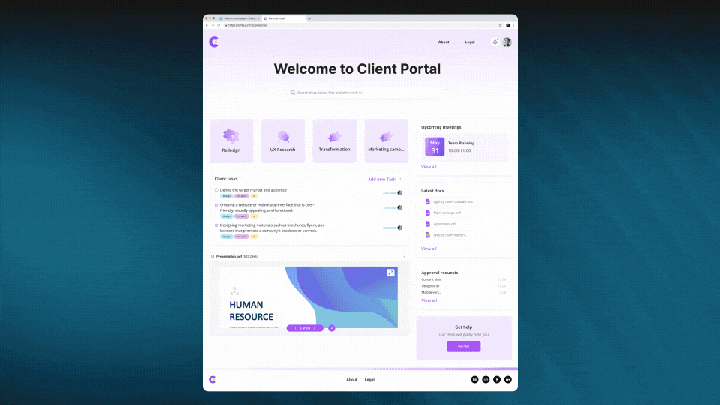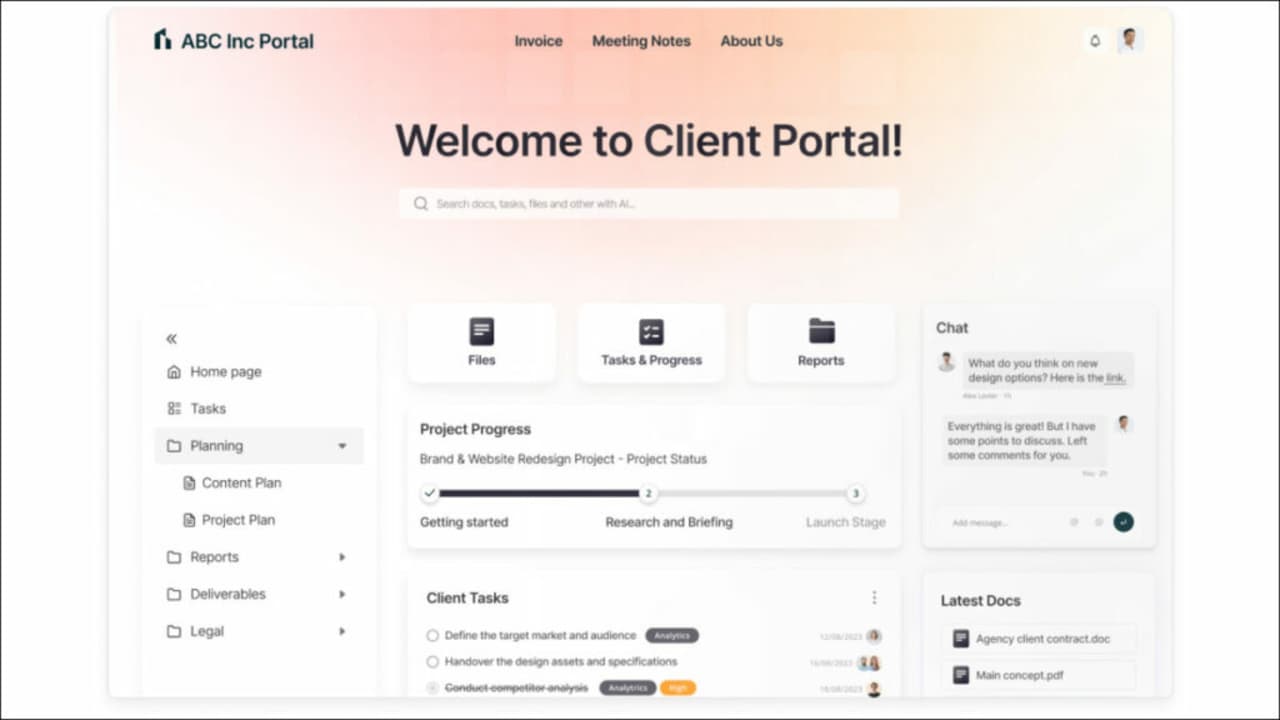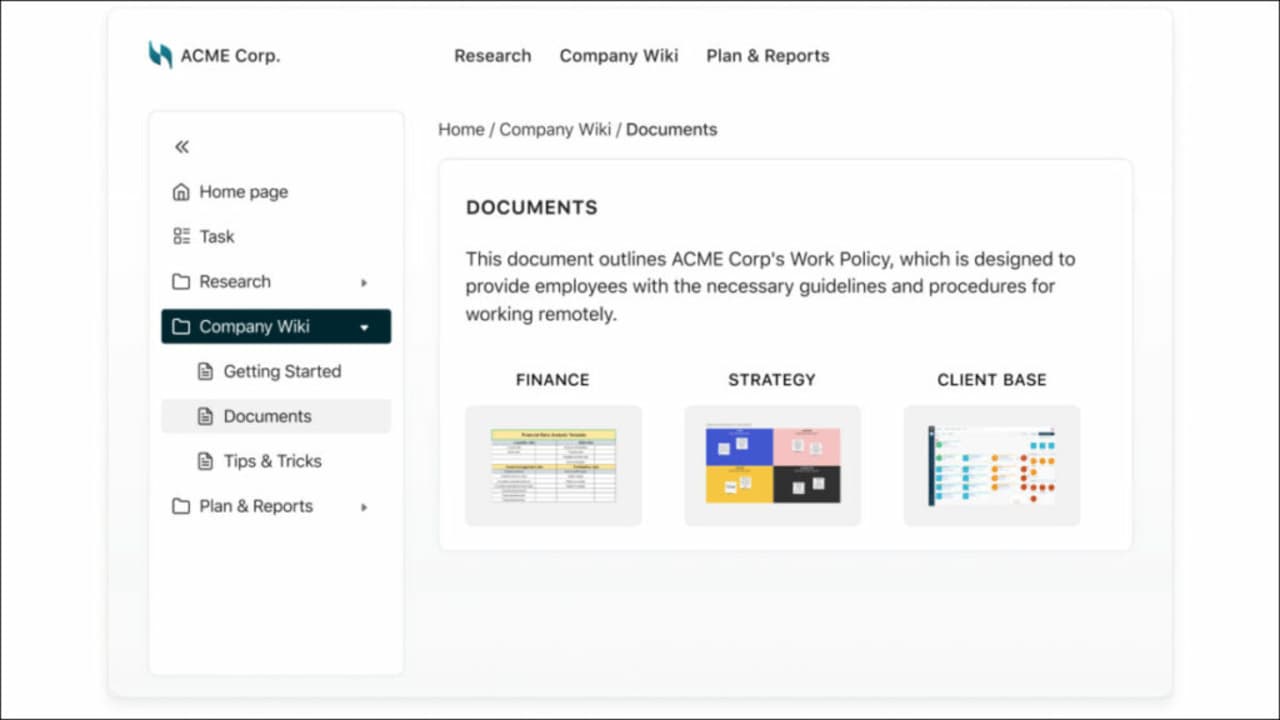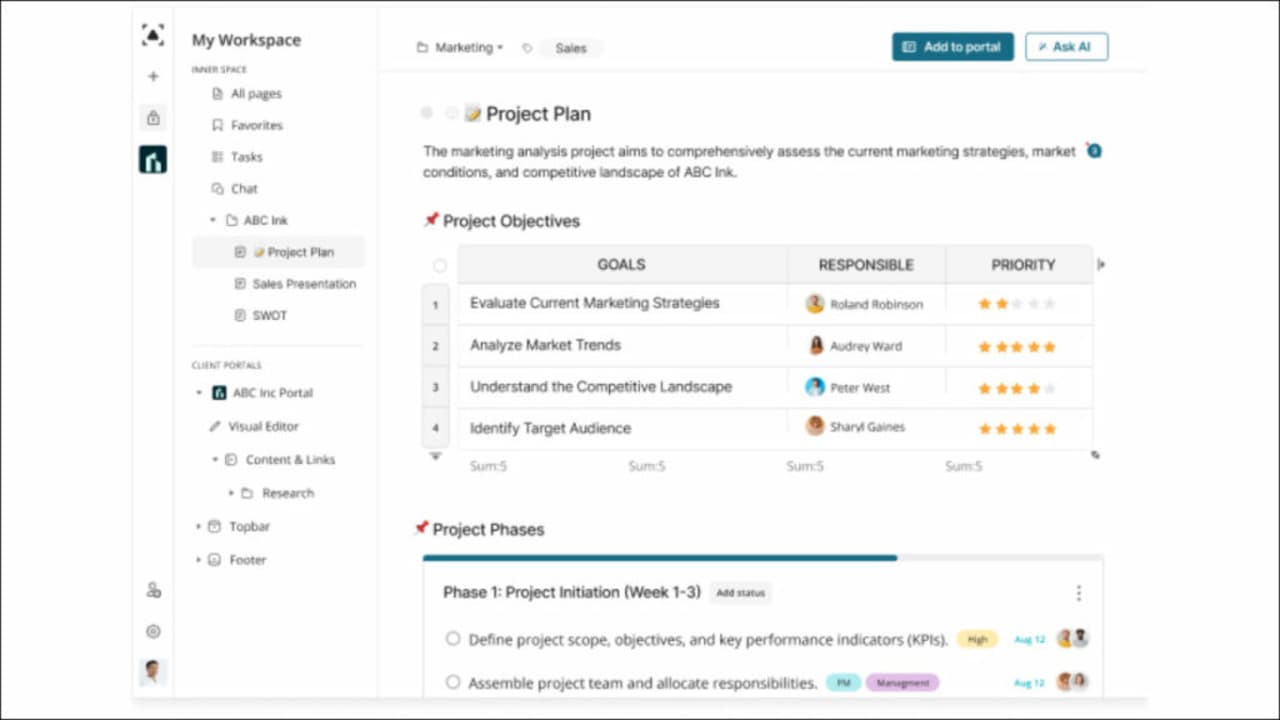How To
2023’s Digital Transformation Benefits Revealed
Discover the 8 key benefits of business digital transformation, their importance, and how to leverage them.

- November 29, 2023
- Updated: March 7, 2024 at 1:40 PM
Digital transformation has quickly become one of the buzzwords in business for good reason: as technology rapidly progresses, organizations must adapt quickly if they wish to remain relevant. An increasing number of organizations are opting to embrace digital transformation as part of their business strategy for keeping up with technology development.
Digital transformation refers to using digital technology across an organization to dramatically change how it functions and serves its customers.
Digital transformation is crucial to modern business survival—no one disputes that fact. However, making the transition may prove more complex and daunting than expected for even experienced managers. Even executives experienced in managing large organizations may need more support in facing the complexity and difficulties of digital transformation.
Check out these eight benefits of digital transformation if you need extra motivation to begin your digital transformation journey. They’re so indispensable in modern businesses that it would be foolish not to undertake them!
Limited Human Error
Digital transformation provides many distinct advantages by eliminating time-consuming manual data entry, decreasing inefficiency and human errors and lessening risk compared to manual processes that rely on human interaction. This is what makes digital transformation important and explains why, according to Gartner research, 91% of businesses engage in some form of digital initiative while 87% of senior business leaders consider digitalization an imperative priority.
Consider, for instance, verifying third-party bank details: digitizing and automating these efficient processes will increase security throughout vendor lifecycle management. Using digital solutions like third-party risk management platforms or payment fraud prevention digital tools may prove especially helpful when faced with this challenge.
Massive Efficiency Boost
Digital transformation brings significant productivity benefits across an organization as a whole; an impressive 40% of surveyed companies rank operational efficiency as its primary advantage.
Digital transformation is about reinventing your company’s business model, equipping it with an unmatched competitive advantage in the market and enabling future digital growth by harnessing new key technologies and adopting digital solutions. By harnessing these effectively, you can:
- Replace and modernize outdated existing systems.
- Optimize management of internal resources.
- Accelerate and refine various processes.
- Start automating manual processes to increase efficiency.
- Access business-critical data and base decisions on data-driven insights.
- Increase agility and adaptability across your entire enterprise.
Digital transformation acts as a powerful catalyst to increase efficiency within an organization, giving it a boost for survival in today’s increasingly digital business ecosystem.
Cost Reduction
Besides the reduction of material and energy consumption, cost reduction serves as the competitive advantage of digital transformation benefits, with nearly two-thirds launching with cost-cutting goals as their starting point, according to Gartner. Companies using digital technologies for cost reduction include increasing asset efficiency, improving worker productivity and cutting overhead and production expenses while streamlining aftermarket service operations.
Starting this journey to reduce costs can often yield additional tangible benefits of digital transformation. By streamlining their factory floor operations more effectively, companies can avoid expenditures related to inefficient energy usage or extended downtime. Additionally, addressing customer service quality issues promptly can yield further financial rewards.
Better Time to Market
Businesses today operate at lightning speed, while customers want new and better products on an almost continuous basis. Manufacturing and supply chain management become more complicated every day; digital technologies offer one solution for speeding both product production and reaching consumers more efficiently.
To facilitate this goal, a “digital thread” may be employed, creating one source of truth for products and processes across an entire company from suppliers through customers and field service teams so the proper information reaches the appropriate people quickly when needed.
Businesses today are adopting agile processes and tools in an attempt to accelerate business processes even faster, aiding innovation while getting products out quickly to their target markets. Flexible collaboration tools play a pivotal role here.
Enhanced data collection
Gartner reports that 63% of retailers plan on increasing spending to collect and analyze data. Businesses collect massive quantities of customer information, but the real value lies in using it effectively. Digital transformation helps companies take care of data management and organize this process more easily. Different teams can use raw data in other parts of an organization to produce insights across customer journey, operations, production, finance and business opportunities, turning raw data into meaningful insight quickly and easily.
It’s also essential that during data collection, sensitive data remains well protected as it passes through various systems, including customer relationship management (CRM) software.
As part of your digital transformation initiative, consider offering customers more control over their data by emphasizing data privacy as a point of differentiation. This approach will enable your company to both stimulate growth and foster trust among consumers who increasingly value having some control over how their personal information is being utilized.
Increased new revenue streams
An effective digital transformation strategy can bring great new revenue streams for organizations.
Deloitte‘s study shows companies with greater digital maturity tend to experience increased sales, higher net revenue growth and larger profit margins. Not only can efficient processes help businesses increase revenues, but they can also assist new business models while taking minimal effort on board. They detect patterns more quickly, decrease problem solving time significantly and identify significant trends with greater transparency and team collaboration.
Leaders equipped with an insightful digital transformation roadmap and plan can make more informed decisions and drive growth in their companies.
Satisfied Customers
Digital transformation has an enormous influence on customer retention and satisfaction. 86% of people abandon brands they once loved after bad experiences. Customers expect businesses to provide products and services through digital channels.
Customer satisfaction has become a central element in successful businesses today and companies that embrace digitization can build strong brands by adapting operations to changing customer demands and gathering insight through data mining into customer behavior and creating user-centric digital interfaces—elements vital in creating winning brands.
Stronger resource management
Digital transformation streamlines business operations by centralizing information and resources within one streamlined set of tools, eliminating redundant software databases as well as redundancies from different vendors. According to estimates, an enterprise business typically uses around 900 applications. Digital transformation enables these applications, databases and software programs to merge into one central repository to optimize business intelligence more efficiently.
Digital transformation extends far beyond any one department or functional unit; rather, its scope encompasses every facet of business operations: from sales and marketing through finance and the C-Suite—all using data at some level or another. It is, therefore, paramount that every department has access to secure tools designed specifically to facilitate work within each division of an enterprise.
Reshaping businesses: digital transformation across industries
Benefits of digital transformation for HR
Why is digital transformation for HR important? As working environments evolve and software management solutions advance, HR organizations continue to adapt to digital environments. Organizations in the 21st century increasingly prefer using digital storage of records and reports and data that consolidate company resources. Any HR organization can reap numerous advantages through adopting digital transformation for HR purposes. Some examples might include:
- Encouraged teamwork and strengthened communication. Digital transformation offers many key benefits that enhance employee relations and communication among colleagues, such as building a digital framework that strengthens bonds and eliminating miscommunication issues like delayed responses or any lost data issues by opting for an innovative digital platform that prioritizes these two elements.
- Boosted performance. Every organization can reap immense advantages by adopting a digital business environment that empowers managers and leaders to anticipate potential problems that could arise, finding lasting solutions with innovative thinking and providing a solid basis for future expansion and success.
- Supported the development of data-driven insights. Gathering more data in today’s digital world will increase your odds of gaining useful insights and meeting goals more successfully. Having an idealized picture of where your company currently stands helps you more easily make decisions in its best interests. Many successful businesses today use digital transformation methods, yielding great results: you couldn’t be in a better time to shift towards data-driven digital culture.
Benefits of digital transformation in marketing
Digital transformation has given business owners and marketers new methods of understanding and improving customer experience and behavior that were unavailable before, building a digital framework that helps enhance offerings while strengthening ties to clientele. As a result, businesses get better at tailoring offerings according to customer demands as well as creating strong bonds between themselves and clients.
- Higher Customization. McKinsey found that over 80% of consumers reported receiving customized messages as increasing their likelihood to repurchase and being an important element for exploring a brand. Apart from increasing leads generation and nurturing efforts, customized campaigns strengthen client relationships while encouraging repeat purchases by making customers feel valued. People respond well when feeling appreciated. Customers will likely choose your business if they feel their concerns have been heard and cared for!
- Utilization of Omnichannel Approach. Omnichannel marketing may seem like nothing more than a buzzword, but its importance cannot be understated in today’s complex client interactions world. Omnichannel’s goal should be to offer your customers a consistent journey between all interactions they have with your company: relevant and personalized information (wherever possible), the sender name clearly displayed, the key reasons for touchpoints and information presented in a digital format!
- Data-Driven Insights. A key benefit of digital marketing for enterprise businesses is its ease of tracking and analysis; organizations using digital tactics can easily use this insight to hone plans and procedures and achieve even better outcomes. What drives data-based insights? Costs and revenue streams. And these are the two metrics that matter to a corporation, so including data-based insights into organizational culture can lead to substantial enhancements both financially and organizationally.
Benefits of digital transformation in banking
“Digital transformation” refers to the practice of replacing analog methods with digital ones in an effort to increase business value for banks through enhanced customer experiences, increased efficiency gains and the incorporation of innovative ideas.
- Enhance customer experience and address customer pain points. Customer wants, needs and habits should drive digital experience design rather than solely considering isolated points of contact. Financial institutions must focus on meeting clients at all stages of their client journeys. Banks that excel in financial services have developed seamless digital experiences to cover customer acquisition, activation and maintenance throughout every stage. Banks can stand out among competitors by emphasizing digital identity solutions and digital wallet services. As most banks provide similar products at similar prices, expediting customer onboarding through digitization and simplification is imperative for success. There is evidence to show that banks with superior client experiences have greater increases in deposits.
- Increases digital channel customer acquisition. Bank customers have become disinterested in opening accounts in person at banking institutions; offering online account opening is an effective way of drawing new business in. If your institution already uses digital channels, make sure they can remain competitive against challenger banks by recruiting new customers through digital means; recruiting digitally saves both time and money while making banks more cost-effective than their counterparts in terms of time- and cost-savings compared with using identity verification during digital onboarding procedures.
- Suppresses Fraud and Meets Regulations. Managing compliance requirements and fraud can be accomplished more easily with an in-depth knowledge of online clients. Businesses have increasingly turned to automated solutions enabled by artificial intelligence (AI) and machine learning because manual approaches cannot keep pace with increasing business demands for KYC/Fraud protection measures. Organizations may reduce fraud with PEPs/sanctions/unfavorable media solutions by performing comprehensive identity verification that ensures they comply with AML and KYC laws.
Benefits of digital transformation in insurance
In this digital age, the insurance industry faces increasing pressure to digitize in order to remain competitive, as modern customers expect digital experiences from insurers. To meet customer expectations and facilitate growth, insurers should digitize products and processes. Digitizing will enhance customer engagement while streamlining operations and fuelling growth, yielding business insights. What are the benefits of digital transformation in insurance?
- Enhanced risk management that limits human error. Digital transformation provides insurers with greater risk management through richer data and insights, but, like any business transformation, is fraught with inherent risks that must be effectively managed to ensure its successful transformation.
- Informed decisions with data pipelines. Insurance industry data sources for product development strategies range from internal systems, customers and marketing initiatives, as well as wearable devices worn by employees and policyholders alike. Maintaining current practices creates “data silos.” Digital transformation enables insurers to build out an organized data pipeline, ensuring the most accurate data gathering, advanced processing and storage. Data pipelines include various data processing activities tailored to meet the unique requirements of insurers, making their data gathering, processing and storage more efficient than ever—be that financial reports from brokers’ performance metrics or customer interactions or IoT feedback data feedback from sensors in connected objects (IoT).
- Precise Underwriting. Digital transformation allows insurers to gather and analyze large volumes of data about potential policyholders, which facilitates more precise risk evaluation and fairer premium pricing decisions.
How to leverage the benefits of digital transformation

As we delve deeper into digital transformation and its advantages, it becomes evident that selecting appropriate software for businesses aiming to thrive in a dynamic ecosystem is of critical importance. These tools not only ensure operational efficiencies are optimized but also ensure digital transformation initiatives yield maximum returns. Platforms such as FuseBase (formerly Nimbus) can serve as invaluable allies, providing seamless integration and optimized workflows. So what’s FuseBase (formerly Nimbus) and how can it leverage your digital transformation?
FuseBase (formerly Nimbus) is an all-in-one collaboration platform created to meet the needs of client-oriented businesses. By centralizing communication, content creation and essential tools into one intuitive hub, it ensures your systems no longer operate separately or your workflow becomes disjointed.
FuseBase (formerly Nimbus) features are tailored specifically to help organizations maximize the return from their digital transformation initiatives and achieve maximum success.
Client portals

FuseBase (formerly Nimbus) stands out by offering organizations Client Portals as part of their digital transformation initiatives, giving a significant boost toward successful transformation. Client portal brings numerous benefits:
- Facilitate real-time project updates and communication. As digital transformation requires real-time project updates and communication without losing information when switching tools, FuseBase (formerly Nimbus) Client Portals provide one central repository for project details, updates and approvals, keeping all information organized without becoming dispersed across teams or applications.
- Evaluate projects and clients with data dashboards – for instance, financial institutions could utilize this feature for monitoring digital onboarding processes like tracking how quickly new customers adopt its services online.
FuseBase (formerly Nimbus) Knowledge Bases

Knowledge bases play an essential part in digital transformation efforts: protecting institutional knowledge while eliminating silos, providing teams with instantaneous access to pertinent data when needed and seamlessly aiding digital processes. Knowledge Bases have proven their worth to many organizations undertaking transformative journeys. This feature ensures knowledge continuity while remaining accessible—perfect for seamless digital transformation initiatives! You can benefit greatly by using knowledge base:
- Searchable Wikis that allow users to quickly create searchable repositories, documentation and guides to centralize knowledge among team members. An IT department could for instance keep extensive technical documents for troubleshooting purposes as well as support.
- Workspaces that provide dedicated areas within an organization for different projects, teams or departments. Any company can utilize workspaces for project management purposes ensuring each team operates more efficiently.
- Tags and nested folders that provide effective solutions for companies looking for efficient organization systems, ideal for categorizing marketing collateral so teams can locate digital assets during campaigns quickly.
Project Management Features

Effective project management and project management dashboards is very important when embarking on significant process changes or technology implementation, particularly digital transformation initiatives that encompass multiple complex projects. A smart project manager ensures digital transformation projects are planned, executed and monitored as planned, setting clear objectives while allocating resources appropriately and monitoring progress.
FuseBase (formerly Nimbus) Project Management offers an accessible toolkit designed to make managing tasks, to-dos, timelines and approvals streamlined across project boards and workflows to support digital transformation efforts.
- Task dashboards help businesses easily track project progress. You can stay abreast of campaign planning, content production and execution stages with this effective monitoring solution.
- Kanban boards enable agile project management by helping teams visualize tasks. Also, time tracking provides organizations with an accurate method for documenting work hours for client billing purposes or any other purpose deemed relevant by management.
- Tables and databases help organizations make data-driven decisions with confidence, acting as key assets during digital transformation initiatives to easily organize client records and make them readily accessible.
Conclusion
Companies understand the necessity of a successful digital transformation strategy as key to future success and will increasingly rely on digital tools to increase returns for shareholders, improve consumer satisfaction and foster an engaging workplace for employees.
Under persistent economic instability in our digital era, embracing digital transformation will become ever more essential. There are multiple business benefits of digital transformation and business leaders today recognize that in order to become digitally mature, their companies must adopt digital business models and integrate a range of previously separate digital transformation strategies into an overarching strategy plan.
Businesses looking to take full advantage of many digital solutions must place digital transformation plans front and center.
Latest from Sabina Sher
- Understanding VoIP: Basics and Benefits of Using in 2024
- How to Get a Business Phone Number: Top 7 Apps for Customer Service and E-commerce Platforms in 2024
- Unlocking Privacy: How to Get a Second Phone Number for Enhanced Security and Communication
- Dialing Success: Top 7 VoIP Providers for Small Businesses
You may also like

What would Steve Jobs think? Apple decides to abandon the project of its augmented reality glasses N107
Read more

If you miss Sekiro, this mod allows you to play Sekiro in Elden Ring
Read more

Millions of weapons and a more customizable experience: This is what Borderlands 4 will be like
Read more

Overwatch 2 promises revolutionary changes and the community erupts, is 6v6 coming back?
Read more

The best FPS of 2024 receives a substantial free update
Read more

Sean Connery could have been the most famous psychopath in the history of cinema
Read more